Exploring Icelandic Cuisine: A Blend of Tradition, History, and Modern Innovation
Iceland is a land of dramatic landscapes, mesmerizing Northern Lights, and rich cultural traditions. Among these treasures lies Icelandic cuisine, a culinary heritage shaped by the island’s history, geography, and unique cultural celebrations. From traditional foods enjoyed during Þorrablót to contemporary Icelandic gastronomy influenced by European and Danish flavors, Iceland’s culinary story is as vibrant and captivating as its landscapes.
The History of Icelandic Cuisine: A Story of Survival and Innovation
The Iceland’s culinary history is deeply tied to its natural resources and geographic isolation. Fish has always been a cornerstone of the Icelandic diet, with cod, haddock, and other varieties being the most abundant and accessible. Lamb, raised on wild pastures, became a dietary staple due to its availability and superior quality.
Historically, food preservation was key to survival. Smoking, drying, and fermenting transformed perishable ingredients into long-lasting sustenance. These techniques not only sustained life but also laid the foundation for iconic dishes like hákarl, dried fish, and smoked lamb.
Today, Iceland celebrates its culinary roots while embracing modernity. Freshness and quality remain at the heart of Icelandic cuisine, reflecting both its history and its future.
Conclusion, Icelandic cuisine is a testament to resilience, creativity, and a deep connection to the land and sea. From the preserved traditions of Þorrablót to the modern fusion of Nordic and European influences, Iceland’s culinary story is as inspiring as its dramatic landscapes.
Whether you’re savoring meat soup in a cozy countryside lodge, exploring fermented shark at Þorrablót, or indulging in a high-end dining experience at a Reykjavík restaurant, Iceland offers a feast for the senses. Discover the magic of Icelandic cuisine and bring home not just memories, but a taste of this extraordinary island.
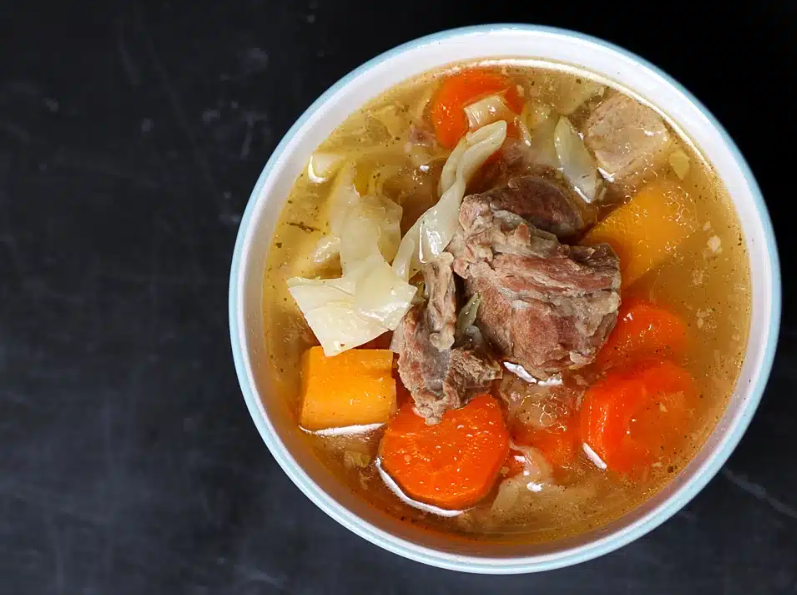
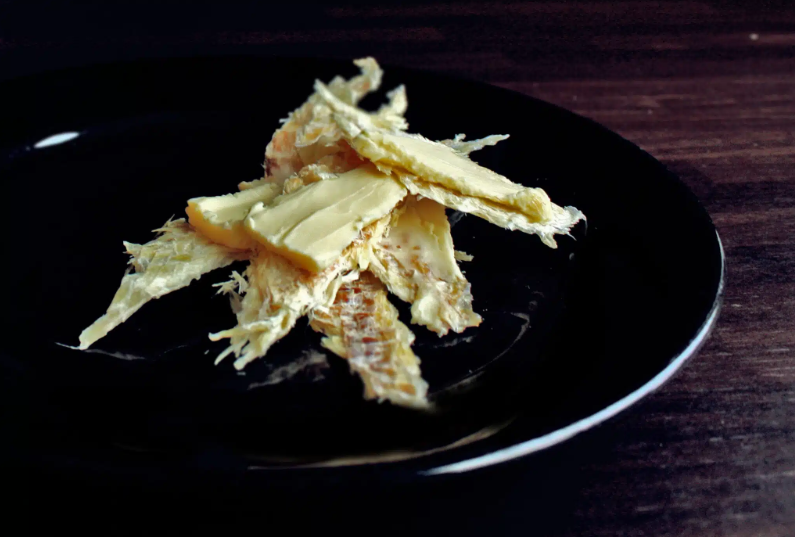
Icelandic Traditional Food: Honoring the Past
The heart of Icelandic cuisine lies in its traditional foods, which showcase the resourcefulness of a people living in a challenging environment. Historically, Iceland’s isolation and harsh climate meant limited resources. Fresh fish, lamb, and dairy became staples, while preservation techniques such as smoking, drying, and fermenting were essential for survival.
Key traditional dishes include:
- Meat Soup (Kjötsúpa): A hearty and comforting soup made with lamb, potatoes, carrots, and rutabagas, this dish is a cornerstone of Icelandic home cooking.
- Hákarl: Fermented shark, a polarizing delicacy that pays homage to Iceland’s resourceful past.
- Dried Fish (Harðfiskur): Often enjoyed with a dollop of butter, this nutritious snack reflects Iceland’s strong fishing tradition.
- Plokkfiskur: A hearty fish stew made with fresh cod or haddock, potatoes, and creamy béchamel sauce.
- Skyr: A thick, creamy dairy product similar to yogurt but with a milder flavor, beloved both traditionally and in modern Iceland.
These dishes are not only gastronomic experiences but also a window into the ingenuity of Icelandic ancestors.
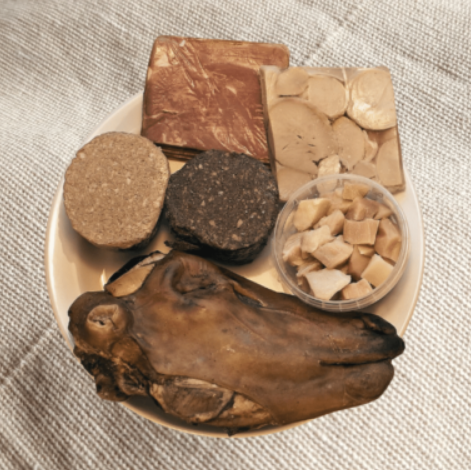
Þorrablót: A Celebration of Tradition
One of Iceland’s most fascinating culinary traditions is Þorrablót, a midwinter festival rooted in Norse culture. Celebrated in January and February, Þorrablót is a feast of preserved foods that honor the resourcefulness and traditions of Iceland’s early settlers.
Typical Þorrablót fare includes fermented shark, smoked lamb, and þorramatur—a platter featuring liver sausage, blood pudding, and rye bread. While the festival’s menu may be an acquired taste for some, it serves as a vibrant connection to Iceland’s past and is a must-experience for those interested in Icelandic culture.
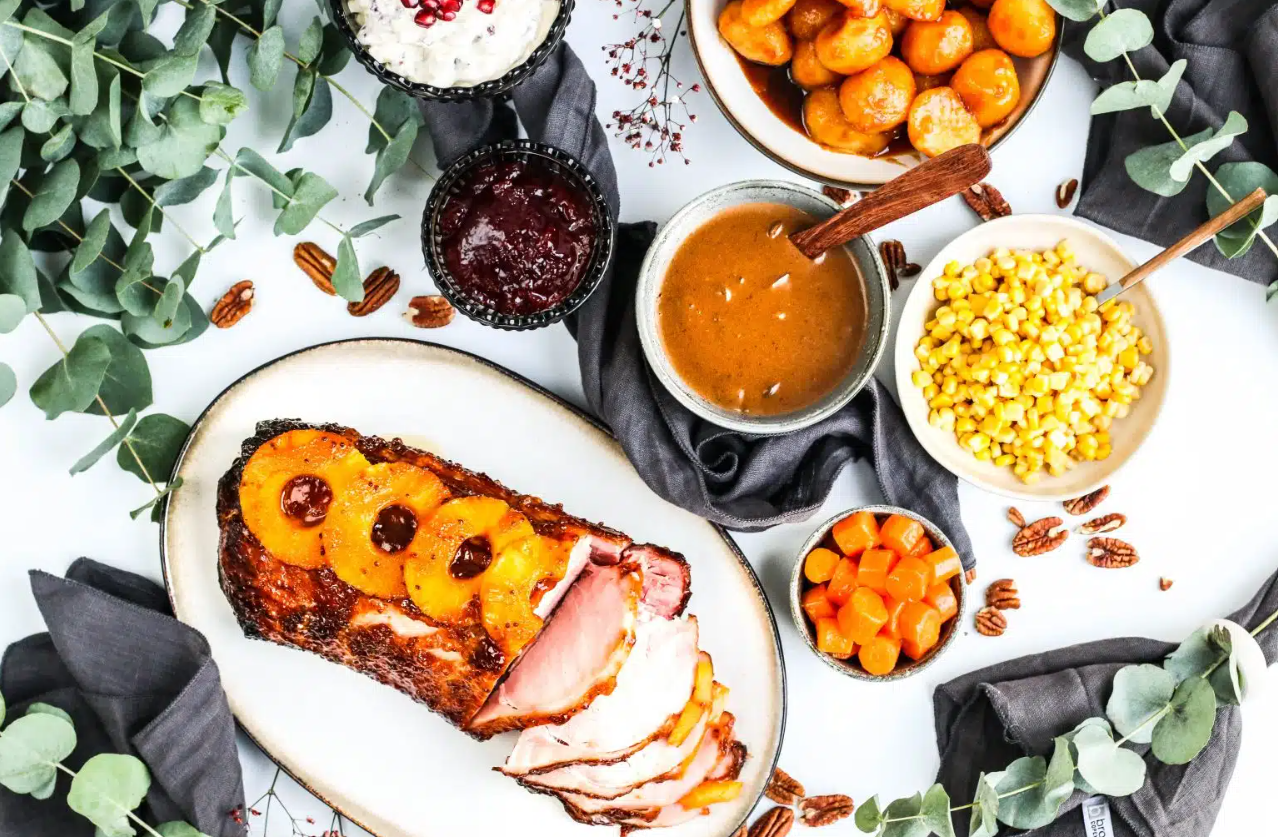
Christmas Traditions: Iceland’s Festive Flavors
Icelandic Christmas is a culinary celebration steeped in tradition and warmth. Seasonal staples include:
- Hangikjöt: Smoked lamb, often served with potatoes, green peas, and a creamy béchamel sauce.
- Hamborgarhryggur: Glazed ham, a popular centerpiece for Christmas dinner, reflecting Icelanders’ love for hearty and flavorful dishes.
- Laufabrauð: Thin, crispy bread intricately decorated with patterns before frying, symbolizing festive cheer.
- Rjómaterta: A cream-filled cake layered with jam, popular during holiday gatherings.
- Pure Icelandic Milk: Known for its freshness and high quality, Icelandic milk complements the holiday table and is a staple in many homes.
Iceland’s love for fresh fish also shines during the season, with dishes like baked cod or salmon gracing many Christmas tables. These traditions bring families together, blending old customs with modern touches.
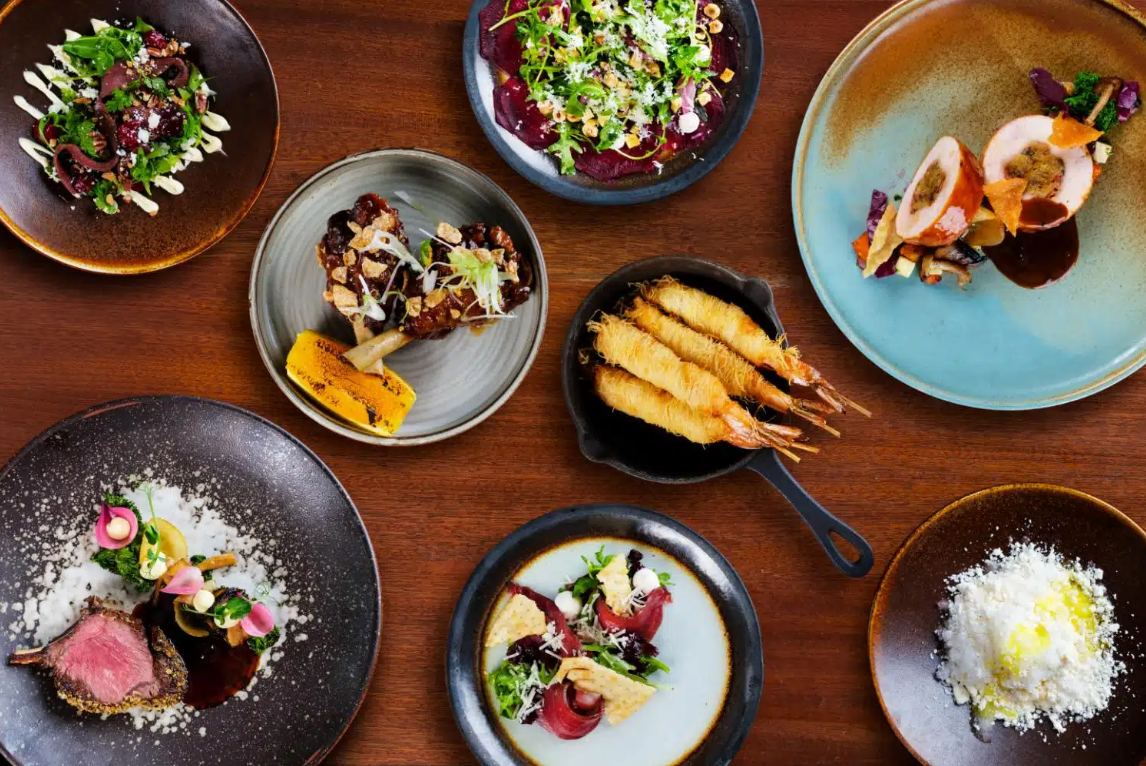
Modern Icelandic Cuisine: A Nordic Renaissance
Today, Iceland’s culinary scene is a dynamic fusion of tradition and innovation. The farm-to-table movement thrives here, with chefs showcasing locally sourced ingredients like Arctic char, langoustines, lamb, and wild herbs.
Influences from Danish and European cuisines are evident, stemming from Iceland’s historical ties with Denmark. Pastries, sauces, and techniques like pickling and fermenting bear a Scandinavian touch while retaining Icelandic individuality.
Contemporary dishes include:
Foraged Herb Salads: Incorporating local herbs like angelica and Arctic thyme.
Reindeer Carpaccio: A luxurious appetizer celebrating Icelandic wildlife.
Langoustine Bisque: Creamy and rich, highlighting the freshness of Iceland’s seafood.
